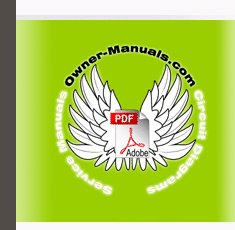|
|
|
Categories
|
|
Information
|
|
Featured Product
|
|
|
 |
|
|
There are currently no product reviews.
 ;
Very well done!!!!! congratulations. It was a bit longer than usual the wiating time even if it was on time (in 24 hours).
 ;
Last week I bought a second hand BAUKNECHT TRK4850 DRYER. It is a professional machine with many programs and switch options. I feared it would be a huge quest to find a manual. I was delighted when I found owner-manuals.com. After payment I received the file to download the next day already. The quality is great. I am very happy. Thanks!
but kindly the distributions of the operating programs not find in the owners manual,can you help me to understand the operating programs instructions thank you
 ;
Very good copy, very readable and easy transaction as always.
 ;
It is perfect, exactly what we needed. It's like the paper version but less clutter.
 ;
Received my manual within 24 hours. Very clear scan of the manual I needed. Thanks!
Creating and Editing Samples (Sample Mode)
Original Tempo Setting
The Original Tempo is the reference tempo of the sample used when synchronizing it to the master tempo. Example: A sample whose original tempo is 100 If the master tempo is set to 200 and the sample is synchronized, the sample will play back at double the speed at which it was recorded. If you set the master tempo to 50 and synchronize the sample, it will play back at half the speed at which it was
fig.04-15_50
Converting the Sample to V-Synth XT Data (Encode)
After you have finished editing the sample, you should encode it. By using the encoding that is appropriate for the sample, you�ll be able to maintain a higher quality of audio while controlling the pitch, time, and formant.
The factory-set waves (preset waves) cannot be encoded.
The exact original tempo can be calculated from the time signature, number of measures, and number of beats for the sample length between Loop Start and Loop End. This means that you must first specify the loop region, and then set the original tempo.
Displaying the Encode Screen
Samples whose wave is too short (0.1 sec or less) cannot be encoded, and the SAMPLE Encode screen cannot be accessed for such samples. 1. Press [MODE].
fig.MODE_50
If you wish to play back a loop while simultaneously synchronizing another sample, you must specify the correct original tempo. If you fail to do this, the sounds will drift out of synchronization. 1. Move the cursor to the item that you wish to set. 2. Either turn the VALUE dial or press [INC][DEC] to set the �Sign� (time signature), �Meas� (measure), and Beat values. 3. Touch .
The V-SYNTH XT MODE MENU window appears.
The precise tempo will be displayed at the right of the �->.� The tempo displayed here is the original tempo.
You can also move the cursor to the original tempo, and set it by rotating the VALUE dial or by using [INC][DEC].
2. Touch <SAMPLE>. The SAMPLE Top screen appears.
fig.04-01_50
3. Select the sample number that you wish to encode. For details on how to select a sample, refer to �Sampling Procedure� (p. 105).
118
|
|
 |
> |
|
